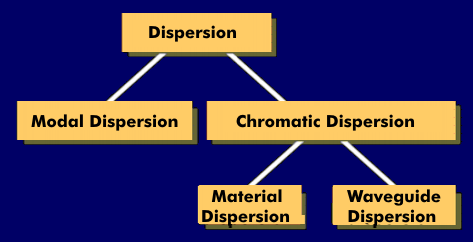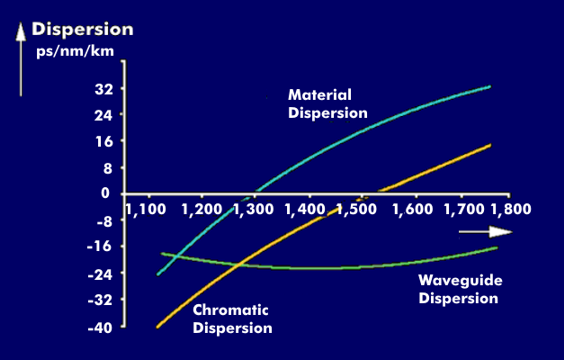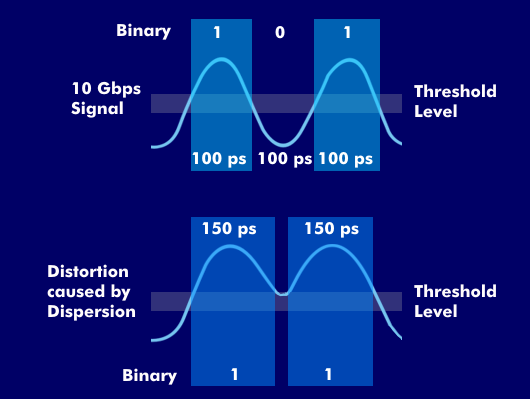dispersion
Dispersion is the broadening of a light pulse in optical fibers(FOC). When a light pulse is transmitted in an optical waveguide, it widens due to transit time differences of the different modes. The optical pulse fed into an optical fiber is wider at the output of the fiber than at the input. This phenomenon, known as dispersion, leads to a limitation of the transmission bandwidth or the bandwidth length product.
Dispersion is given as the ratio of the transit time difference in pico- (ps) or nanoseconds, to the wavelength in nanometers (nm) and the optical fiber length in kilometers (km); ps/nm/km.
Dispersion is not limited to optical transmission media, but occurs equally in wired lines. Line capacitances and inductances broaden pulse-shaped signals. The longer the transmission line, the greater the broadening.
In optical transmission, pulse broadening depends on the fiber quality, the spectral width of the light source and the line length. A distinction is made between mode dispersion and chromatic dispersion, which in turn is composed of material dispersion and waveguide dispersion. Production tolerances, on the other hand, are expressed in profile dispersion.
Several specially doped optical fibers have been developed for dispersion compensation, such as the DSF fiber, the DCF fiber and the NZDSF fiber. Dispersion is expressed as a unit of time to unit of length (ns/km) and is the reciprocal of the bandwidth length product. Example: Dispersion 5 ns/km, bandwidth length product 200 MHz x km.



